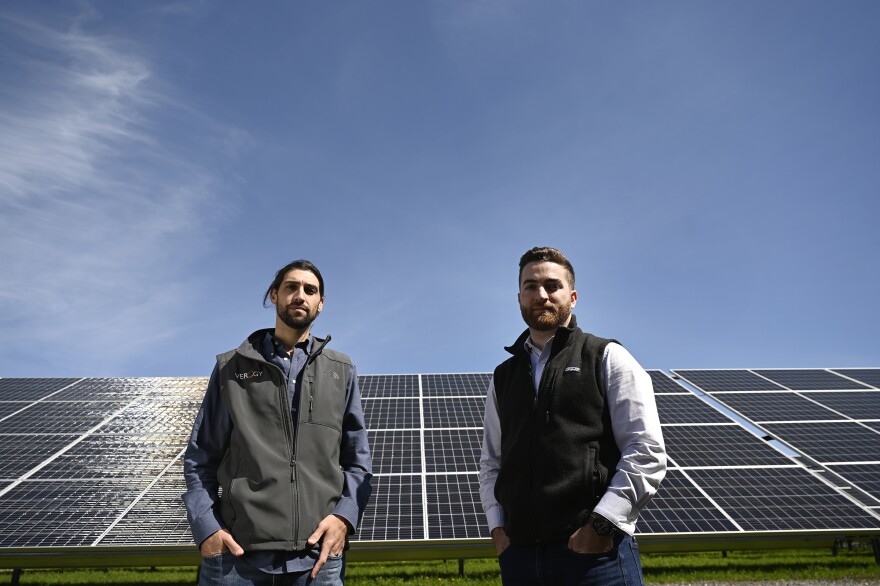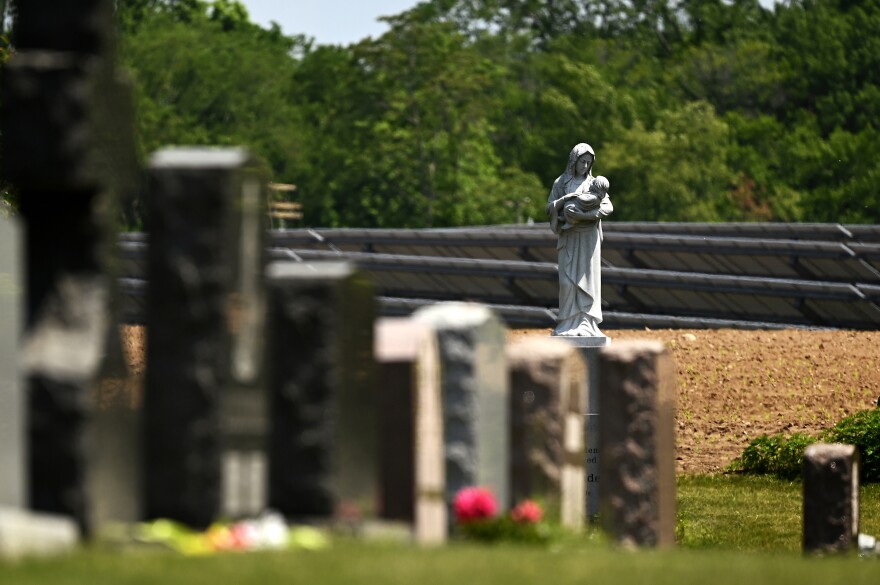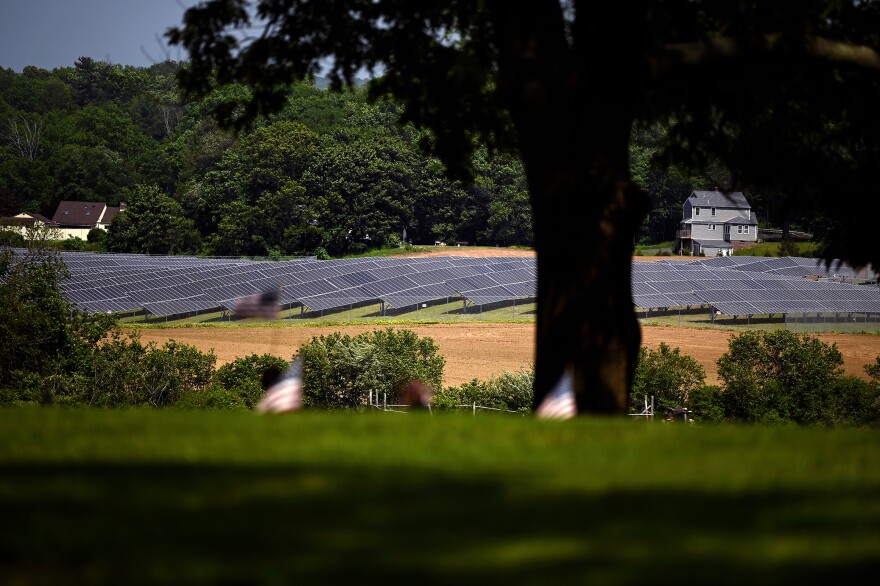Fewer families are choosing burials for deceased loved ones and opting instead for cremation. It’s a funerary trend that is helping to forge a link between the Catholic Church and the solar industry.
If you picture a solar field, what do you see? Probably a large open space. Flat and dry without too many trees and with lots of sunlight.
Now think about a cemetery. Swap out those solar panels for gravestones and the locations suddenly have a lot in common. So why not combine the two?
“We’re not going to be putting solar panels over existing gravestones. That’s not something that’s going to be happening,” said Will Herchel, CEO of Verogy, a Hartford-based solar developer.
Still, he said the solar industry needs to get creative.
“There’s a lot of rooftops that are available and there’s a lot of rooftops that aren’t available," Herchel said. “The amount of solar and renewable energy … that we have to put out there is so significant that you need to take a look at all comers.”
So Herchel and his team started looking at unused cemetery plots.
We recently met up at one in Torrington: an array his company had just built on land owned by the Catholic Cemeteries Association of the Archdiocese of Hartford.
It’s about 7,000 solar panels sitting on a dozen acres. And, no, none of the panels are over tombstones. In fact, Bryan Fitzgerald, Verogy’s director of development, said the array and the cemetery are totally separate.
“You have a good bit of forest in between the cemetery and the solar farm. You cannot see the solar farm from the cemetery. You can’t see the cemetery from the solar farm,” he said.

Solar energy has amped up production in recent years as costs have dropped and the state has eyed aggressive renewable energy targets.
Meanwhile, the funeral industry is also undergoing a major shift: Fewer families are burying their loved ones.
“Cremation has steadily increased over the years, and it seems like it will continue to increase,” said David MacDonald, president of the Connecticut Funeral Directors Association.
MacDonald said 2020 was an awful year for funeral directors. Statistics from the state Office of the Chief Medical Examiner show that the impact of COVID-19 meant thousands of additional cremations compared to the prior year.
But the shift from fewer burials to more cremations dates back long before the pandemic.
State data show a steady rise in cremations for reported deaths going back to the 1990s. In the 1960s, the Catholic Church said cremation was an acceptable funeral rite. And in 2016, the church issued new guidelines acknowledging cremation’s rise, while noting burial was still preferred by the church.
MacDonald said the trend toward cremation means owners of land earmarked for burials need to get creative.
“If they thought years ago there’s this many people in the world, we’re doing this many burials, and it’s declined, well they still need money to pay the employees to mow the lawn and keep the place up to par,” MacDonald said.

So cemeteries have created fees to generate income. Or, in the case of the Catholic Cemeteries Association of the Archdiocese of Hartford, they’ve turned to developers like Verogy.
John Pinone, executive director of the Hartford CCA, wouldn’t say how much money his group was poised to bring in over the course of its 20-year solar lease in Torrington.
But he said the CCA did look hard at burials versus cremations and asked a simple question: Would bodies need to go into that unused cemetery space in the next two decades?
“And the answer was no. The answer also is that, we knew in 20 years if we do need the land back, we can get it back,” Pinone said. “This is just a lease … It allows us flexibility to create another source of revenue.”
In addition to Torrington, the CCA has a solar array on land attached to a cemetery in North Haven.
Pinone said they’re also working on projects in Watertown, Southington and East Windsor.
And while a 20-year lease might seem daunting for the average person, back at the Torrington array, Verogy’s Will Herchel said cemetery owners think, and plan, generationally.
And part of that planning, Herchel said, is taking good care of the land.
“They can be stewards of the property. They can allow for green energy development, and at the end of the day they can return the use of the property to what they see fit. Which might be a cemetery,” he said, “or might not.”


